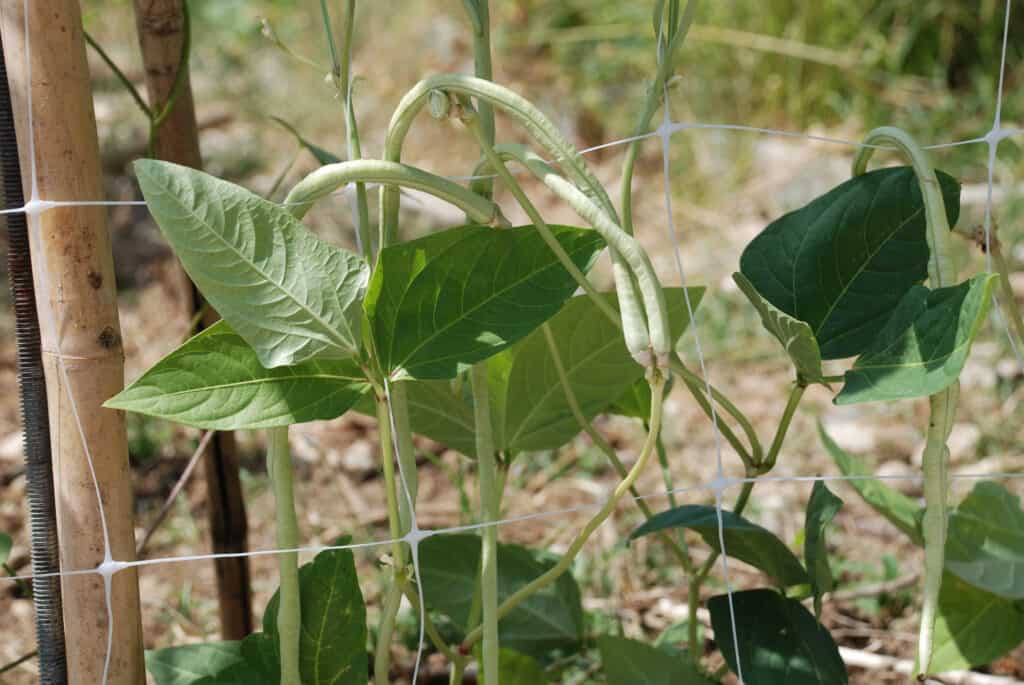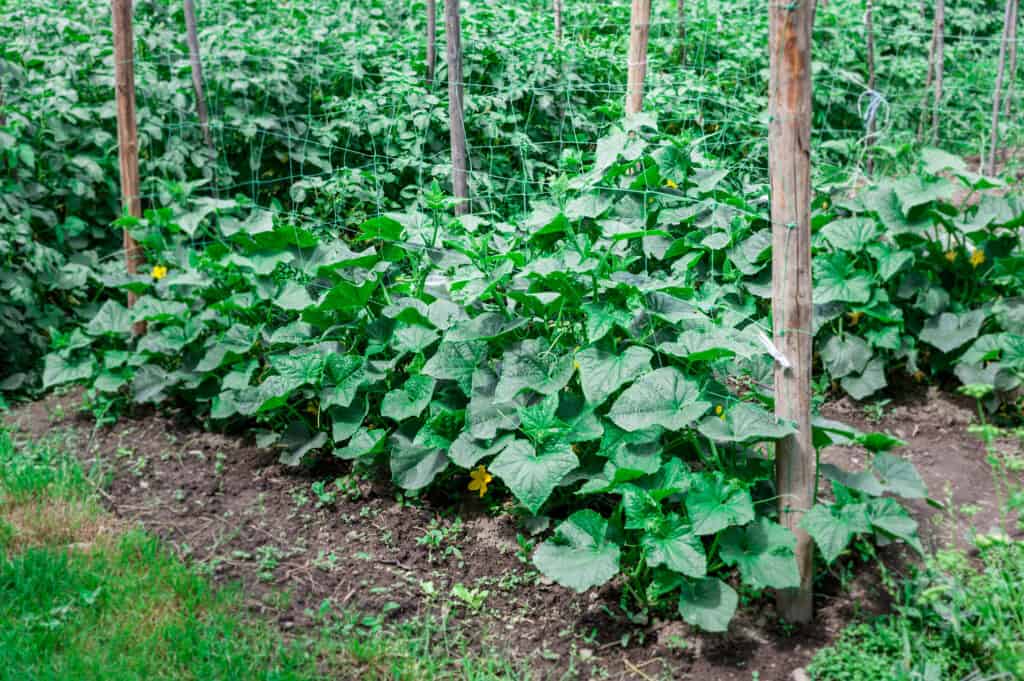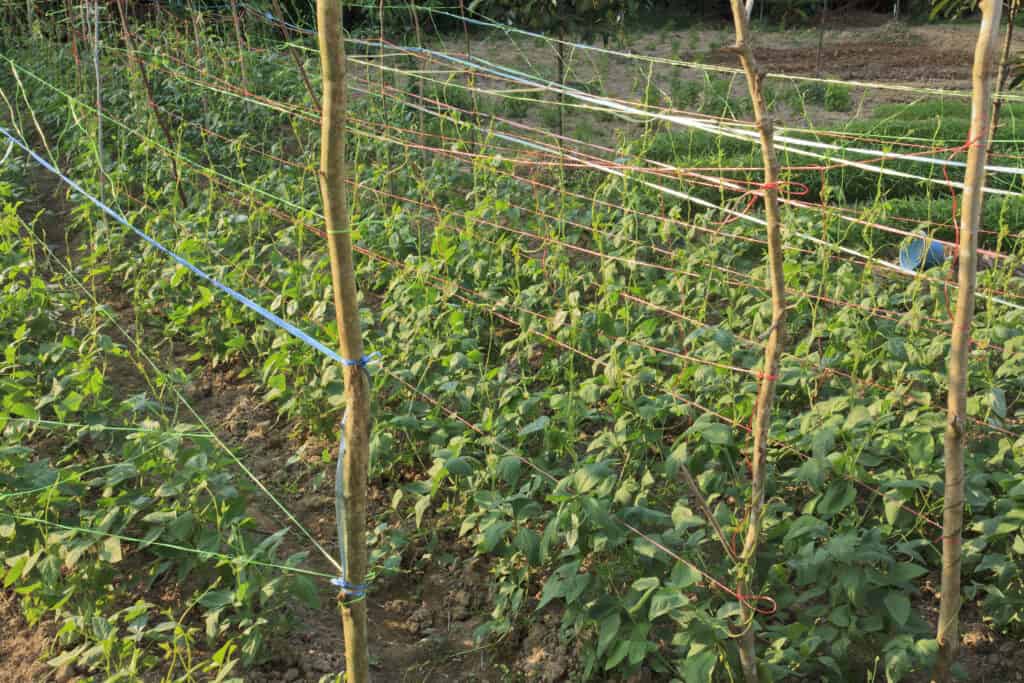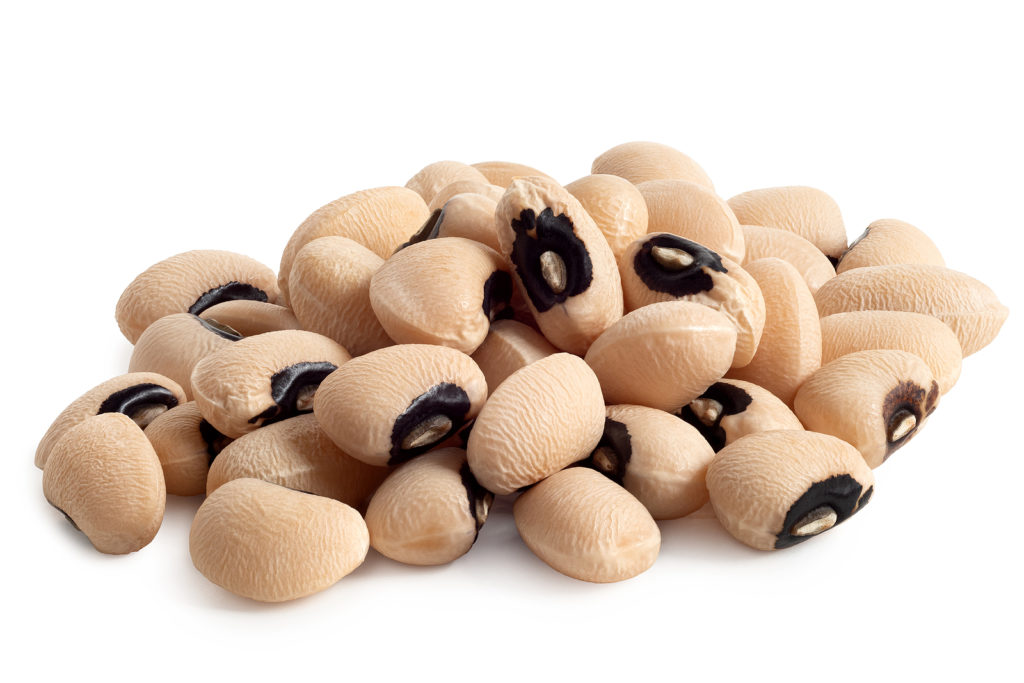Southern peas are tender bushy or vining annuals. Southern peas are also called black-eyed peas, crowder peas, and yard-long beans. Southern peas are sometimes called cowpeas or field peas.
Southern peas are more beanlike than pealike. The best-known Southern pea is the blackeyed pea. It is white with a distinctive black mark at the hilum or seed scar where the seed attaches to the pod which makes it look like an eye. Other types of Southern peas are the crowder pea, so named because the seeds seem to be crowded into their pod; cream or conch peas; and the purple-hull pea, named for the color of their pod. Southern peas are also called cowpeas or field peas because they are sometimes fed to livestock or used as green manure.
Related articles:

Other subspecies of the Southern pea include a very long-podded subspecies (sesquipedalis) known as asparagus bean, snake bean, or yard-long bean and an oblong-seeded subspecies (cylindrical) known as catjang pea or Indian cowpea
Here is your complete guide to growing southern peas.
Southern peas quick growing tips
- Sow Southern peas in the garden 4 weeks after the last average frost date in spring.
- For an early start, sow Southern peas indoors 6 weeks before you plan to transplant them into the garden.
- Sow succession crops every 2 weeks for a continuous harvest.
- Southern peas require 60 to 90 days to reach harvest.
- Southern peas yield: plant 30 Southern pea plants for each household member.

Where to plant southern peas
- Plant Southern peas in full sun; they will tolerate partial shade.
- Grow Southern peas in loose, well-drained soil. Southern peas prefer sandy, loamy soil. Soils rich in organic matter will increase productivity, but Southern peas, like other legumes, are often planted to help improve poor soil.
- Add aged compost to growing beds at planting time.
- Southern peas prefer a soil pH of 6.0 to 6.5.
Southern peas planting time
- Sow Southern peas 4 weeks after the last average frost date in spring when the soil has warmed to at least 60°F (16°C).
- Southern peas prefer warm to hot weather, with air temperatures between 70° and 95°F (21-32°C)–most days exceeding 85°F (29°C).
- Southern peas require 60 to 90 frost-free days to reach harvest.
- For an early start, sow Southern peas indoors 6 weeks before you plan to transplant them into the garden.
- Sow southern peas for later transplanting in biodegradable peat or paper pots that can be set whole into the garden; generally, Southern peas do not transplant well. Sow succession crops every 2 to 4 weeks.
Good Products for Growing Your Garden
- 55 Heirloom Vegetable Varieties–27,500 Non GMO Seeds
- Heirloom Vegetable Seed Collection – 105 Varieties
- Full Spectrum, LED Grow Lights
- Seed Starter Kit with Humidity Dome (120 Cells Total Tray)
- Galvanized Raised Garden Bed with Cover
- Gardzen 10-Pack 10 Gallon Grow Bags
- Captain Jack’s Dead Bug Brew
- Harris Neem Oil Plant Disease Control
- Freeze Protection Garden Mesh Netting Kit
- Kitchen Garden Grower’s Guide Vegetable Encyclopedia
- Vegetable Garden Almanac & Planner
Planting and spacing southern peas
- Sow Southern peas ½ to 1 inch (2.5cm) deep, space plants 2 inches apart later thinning successful seedlings to 4 inches apart (25cm). Space rows 3 feet (.9m) apart.
- Raise rows 6 to 8 inches (15-20cm) above the garden; Southern peas grow best in well-warmed soil.
- Grow Southern peas up stakes, trellises, or wire supports strung between stakes.
Southern peas companion plants
- Grow Southern peas with beans, carrots, corn, cucumbers, radishes, and turnips.
- Do not plant Southern peas with garlic, onions, or potatoes.
Container growing southern peas
- Southern peas can be grown in containers, but growing peas in a container may not be practical because many plants are required to produce a reasonable crop.
- Grow Southern peas in containers 12 inches deep.

Water and feeding southern peas
- Keep the soil moist; do not let Southern peas dry out.
- Water at the base of plants; overhead watering may cause flowers or small pods to fall off and reduce the yield.
- Add aged compost to growing beds at planting time. Side dress Southern peas with compost tea at midseason.
- Too much nitrogen will prevent blossoms from setting pods.
Southern peas care
- Set supports in place at planting time.
Southern peas pests
- Southern peas can be attacked by bean beetles, aphids, spider mites, and leafhoppers.
- Control aphids and beetles by handpicking or hosing them off plants or pinch out aphid-infested vegetation.
- Plants infested with spider mites should be removed and placed in a paper bag and put in the garbage before they spread to other plants.
Southern peas diseases
- Southern peas are susceptible to anthracnose, rust, mildew, mosaic, and wilt.
- Plant disease-resistant varieties when possible.
- Keep the garden clean and free of debris.
- Do not work with plants when they are wet to avoid spreading fungal spores.
- Remove and destroy diseased plants before healthy plants are infected.
Harvesting and storing southern peas
- Southern peas can be eaten fresh or dried.
- For fresh use harvest Southern peas when pods are just bulging but still young and tender. The entire pod can be eaten or the pods can be shucked and the seeds or peas eaten after rinsing.
- Dried Southern peas can be harvested after the pods have matured, turned yellow or brown, and dried but before the pods have split open.
- Southern peas for fresh use will be ready for harvest in 60 to 70 days, and for dry use in 90 or more days.

Storing and preserving southern peas
- Fresh, green-podded Southern peas can be stored unshelled in the refrigerator for 1 to 2 weeks.
- Green-shelled peas can be blanched, cooled in an ice-water bath, and stored in the freezer for up to 1 year.
- Dried-shelled Southern peas can be stored in a cool, dry place for 10 to 12 months.
Southern peas varieties to grow
- Blackeyed peas: ‘Big Boy’ (60 days); ‘Blackeyed Southern Peas’ (60-85 days); ‘California Blackeye’ (75 days); ‘California Blackeye No. 5’ (75 days); ‘Magnolia’ (70 days); ‘Queen Anne’ (68 days).
- Crowder peas: ‘Brown Crowder’ (65 days); ‘Calico Crowder’ (79 days); ‘Colossus’ (85 days); ‘Knuckle Purple Hull’ (75 days); ‘Mississippi Purple Hull’ (70 days); ‘Mississippi Silver’ (70 days); ‘Pinkeye Purple Hull’ (50-85 days).
- Cream peas: ‘Cream’ (70 days); ‘Running Conch’ (95 days); ‘Zipper Cream’ (70 days).
- Cowpeas: ‘Lady’ (60 days); ‘Queen Anne’ (60 days).
About southern peas
- Common name. Pea, southern pea, black-eyed pea, cowpea, crowder pea
- Botanical name. Vigna unguiculata subsp. unguiculata
- Origin. Asia
Also of interest:
How to Plant, Grow, and Harvest Southern Peas
Related articles:
How to Plant and Grow Snap Beans
How to Harvest and Store Snap Beans
Bean Growing Problems: Troubleshooting
Five Ways to Quick Cook and Serve Snap Beans
How to Can Green Snap Beans for Beginners
Cooking and Serving Yard-Long Beans
How to Grow Plant, Grow, and Harvest Chickpeas and Garbanzo Beans
How to Cook and Serve Chickpeas
How to Plant and Grow Lima Beans
How to Plant, Grow, and Harvest Broad Beans and Fava Beans
Five Ways to Cook and Serve Fava Beans
How to Plant, Grow, and Harvest Southern Peas
All About Dried Beans – Growing and Cooking
Container Growing Beans – Plant, Grow, and Harvest Tips
Grow 80 vegetables: THE KITCHEN GARDEN GROWERS’ GUIDE
Garden Planning Books at Amazon:
- Vegetable Garden Almanac & Planner
- Kitchen Garden Grower’s Guide Vegetable Encyclopedia
- Vegetable Garden Grower’s Guide
- Tomato Grower’s Answer Book
More how to grow articles:
Learn how to plant, grow, and harvest your favorite vegetables. Click below for all you need to know.
- Artichoke
- Arugula
- Asparagus
- Beans, Snap
- Beets
- Broad Beans
- Broccoli
- Brussels Sprouts
- Cabbage
- Cantaloupe — Melons
- Cardoon
- Carrots
- Cauliflower
- Celeriac
- Celery
- Chard
- Chayote Squash
- Chickpeas
- Chicory
- Chinese Cabbage
- Collards
- Corn Salad
- Corn, Sweet
- Cresses
- Cucumbers
- Eggplant
- Endive and Escarole
- Fava Beans
- Florence Fennel
- Garbanzo Beans
- Garlic
- Horseradish
- Jerusalem Artichoke
- Kale
- Kohlrabi
- Leeks
- Lettuce
- Lima Beans
- Melons
- Mizuna
- Mustard Greens
- New Zealand Spinach
- Okra
- Onions
- Parsnips
- Peanuts
- Peas
- Peppers
- Potatoes
- Pumpkins
- Radicchio
- Radishes
- Rhubarb
- Rutabaga
- Salsify
- Shallots
- Sorrel
- Southern Peas
- Soybeans
- Spinach
- Squash, Summer
- Squash, Winter
- Sunchokes
- Sweet Potato
- Swiss Chard
- Taro
- Tomatillo
- Tomatoes
- Turnips
- Watermelon
- Zucchini















